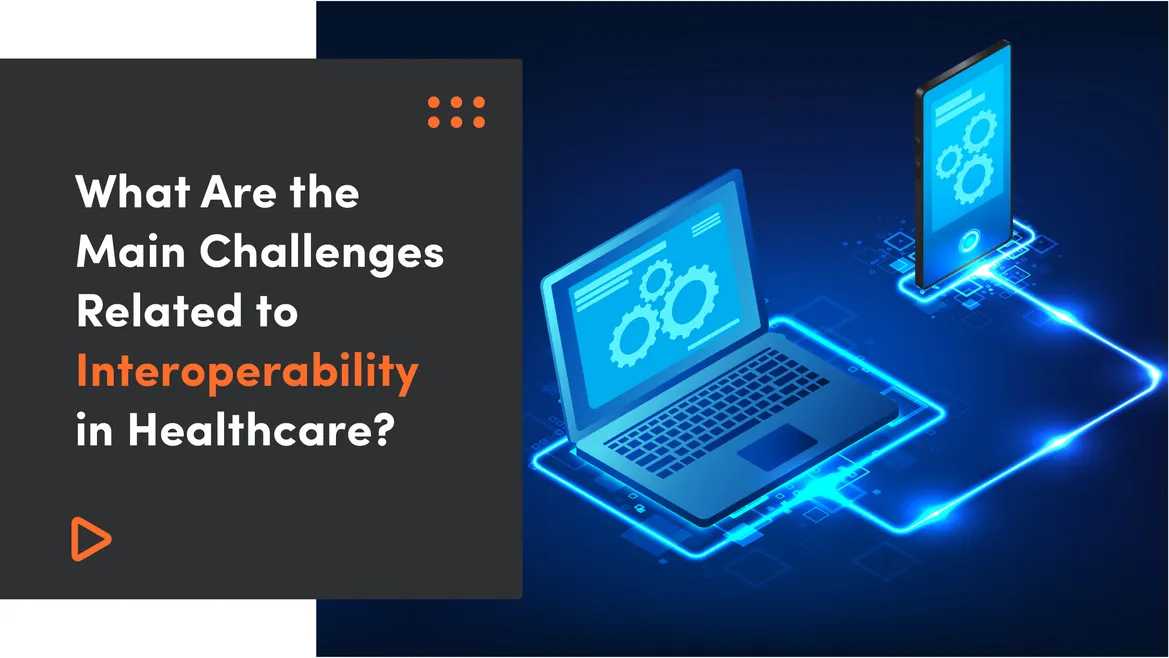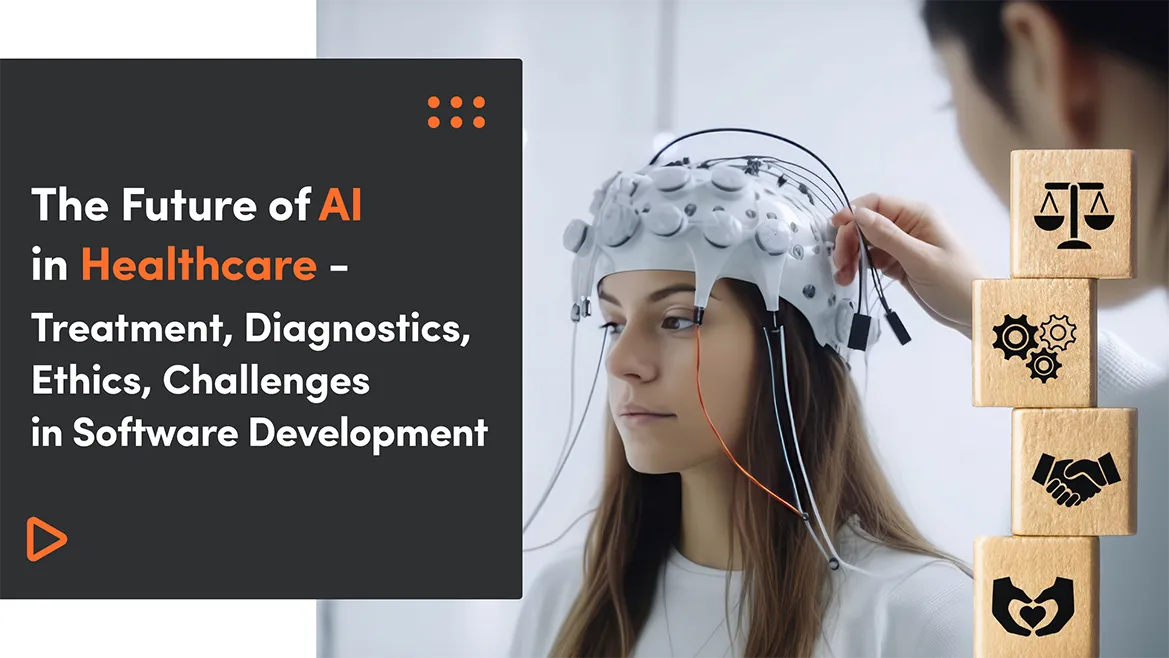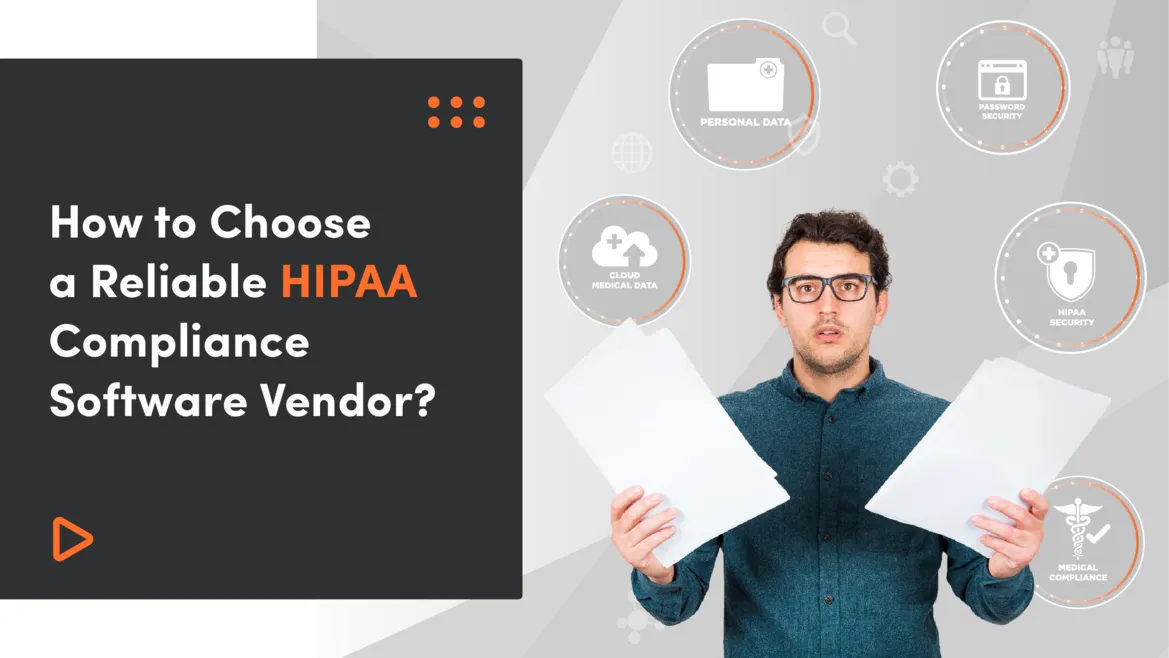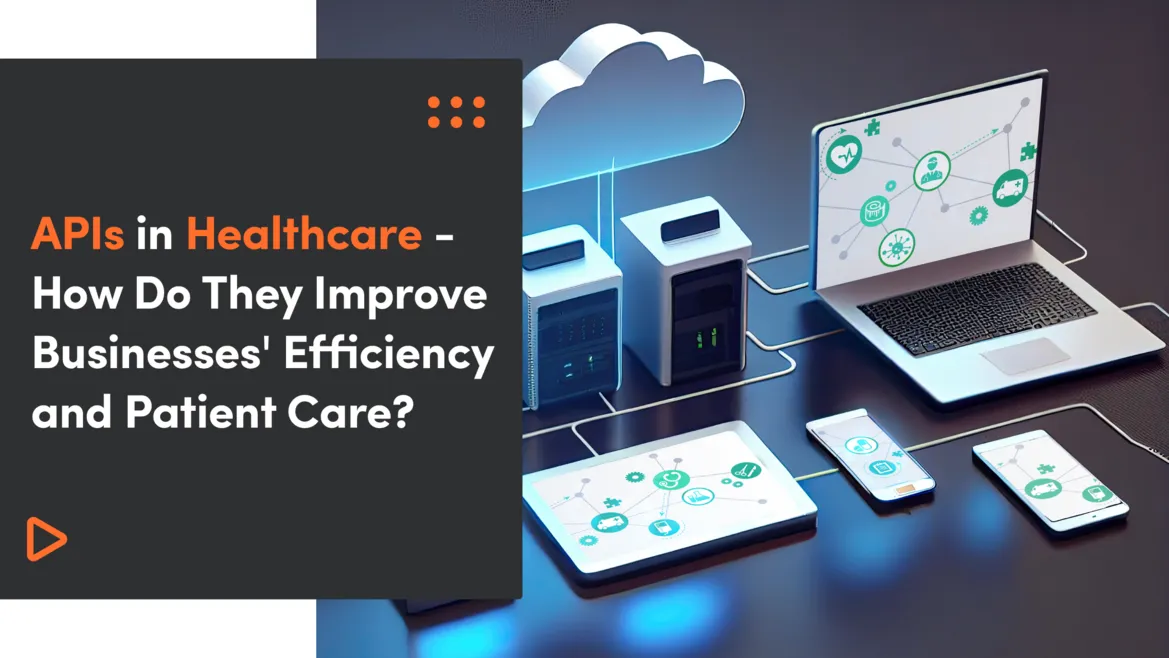The 2016 Cures Act has propelled the issue of healthcare interoperability to the forefront of the industry's agenda. With the mandate for EHR systems to incorporate APIs and the strict penalties for information blocking (civil fines of up to $1 million), healthcare providers are compelled to adopt interoperability to ensure the efficient exchange of patient data, compliance with the law, and the delivery of high-quality healthcare services.
The primary goal of the Cures Act is to open the door to innovation in patient-facing tools. It envisions a healthcare landscape where innovative applications and platforms can effortlessly retrieve relevant data from EHR systems, presenting it in a comprehensible and user-friendly format for patients. This seamless data sharing can lead to better patient care, reduced medical errors, and improved decision-making by healthcare professionals.
While the concept of interoperability holds immense promise for improving patient care, it also brings with it a host of challenges that healthcare businesses and industries must grapple with.
In this article, we will explore the main challenges related to interoperability in healthcare and shed light on how they impact various aspects of the industry. Understanding these challenges is crucial for healthcare stakeholders as they endeavor to navigate the complexities of modern healthcare delivery while ensuring the best possible outcomes for patients.
What you will learn from this article:
- Why is interoperability in healthcare important?
- The benefits of interoperability in healthcare
- How interoperability improves the quality of care for patients
- What type of data is exchanged via interoperable systems?
- How healthcare interoperability can enhance your compliance strategy
- The challenges of interoperability in the Healthcare sector
- The correlation between interoperability and APIs in healthcare
Why Is Interoperability Important in Healthcare?
Interoperability in healthcare is of paramount importance as it serves as the cornerstone for delivering efficient, patient-centered, and high-quality healthcare services.
With interoperability, healthcare providers can access comprehensive patient records, regardless of where the data originates. This means that when a patient moves between different points of care, their medical history and treatment plans are readily available, fostering smoother transitions and more effective care coordination.
The fragmented nature of healthcare data can lead to misunderstandings and errors in patient care. Interoperability ensures that critical patient information is accurate and up-to-date, reducing the risk of medication errors, misdiagnoses, and adverse events.
Additionally, interoperable systems streamline administrative processes, eliminate redundant data entry, and reduce paperwork. This efficiency not only saves time but also cuts down on costs, allowing healthcare providers to focus on delivering high-quality care.
Interoperability extends beyond individual care, enabling the aggregation and analysis of population-level health data. This data-driven approach empowers health system administrators to identify trends, allocate resources effectively, and plan impactful interventions to improve the health of entire communities.
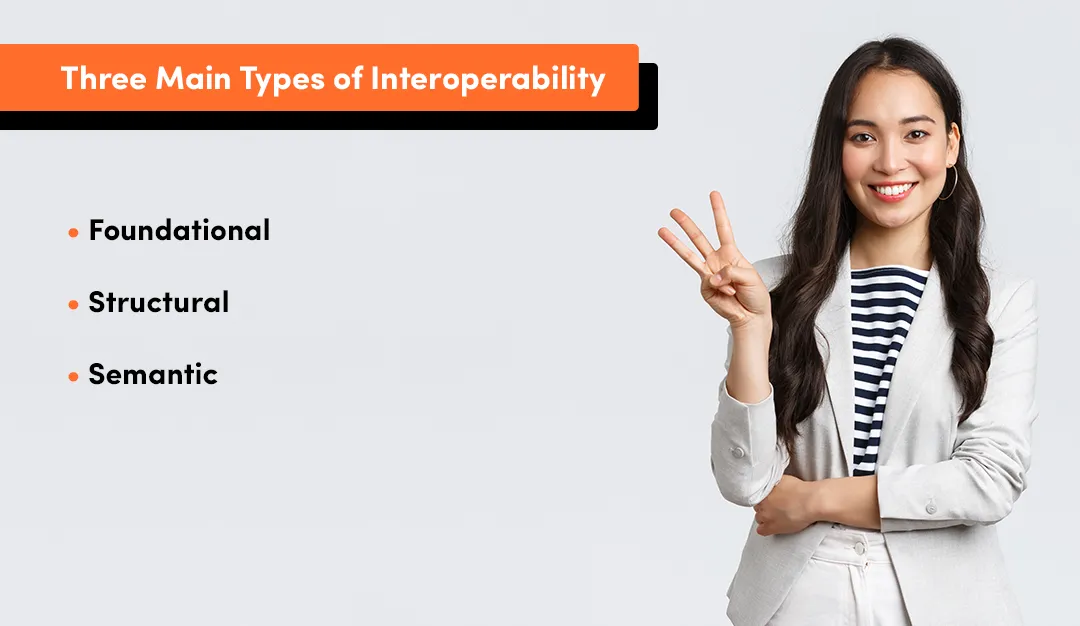
There are three main types of interoperability: foundational/technical, structural, and semantic, each playing a crucial role in improving the healthcare system.
- Foundational interoperability
Foundational interoperability is the initial tier of data sharing between disparate systems. It establishes the fundamental capability for one software system to connect to another separate software system. Its core purpose is to facilitate the seamless sharing and reception of data between these systems.
However, it does not encompass the capacity of the receiving system to interpret the data without additional technological assistance.
- Structural interoperability
This is the intermediate tier, which defines the precise structure or format that data should adhere to when it's exchanged. The aim is to establish a standardized and consistent approach for exchanging healthcare data between different systems.
This aspect of interoperability is also referred to as syntactic or technical interoperability, and its primary goal is to ensure that data sharing can be comprehended at a detailed data field level.
In essence, structural interoperability guarantees that when data is transferred from one system to another, it maintains its original context and significance. The Healthcare Information and Management Systems Society (HIMSS) emphasizes that at this level, the clinical or operational purpose and meaning of the data must be preserved and remain unaltered. This commitment to preserving data integrity is a fundamental aspect of achieving effective interoperability in healthcare.
- Semantic interoperability
This is the highest tier. At this level, the focus is on ensuring that two or more systems have the ability to not only share but also accurately interpret and effectively utilize the information that they exchange.
Semantic interoperability achieves this by employing both the structuring and codification of data, which includes the use of standardized vocabularies and terminology. This approach is instrumental in supporting the electronic exchange of patient data and information in the healthcare ecosystem.
In healthcare, semantic interoperability plays a pivotal role in bridging the existing technology and terminology gaps that often separate various software systems and data sources. By harmonizing the way data is structured and described, it aims to create a common language and understanding among disparate systems, ultimately paving the way for more seamless and meaningful information exchange within the healthcare ecosystem.
What Are the Benefits of Interoperability in Healthcare
From improved patient care and higher productivity to reduced errors and financial savings, interoperability is greatly reshaping the healthcare industry. Let’s explore the significant benefits of interoperability in healthcare.
- Reduced errors
By ensuring that accurate and up-to-date patient information is readily accessible, interoperability minimizes the risk of medical errors, leading to improved patient safety and outcomes.
- Cost savings
By reducing redundant tests, administrative overhead, and errors, interoperability contributes to cost savings for healthcare organizations and patients alike.
- Better patient care
Interoperability enables healthcare providers to access comprehensive patient data, leading to more informed clinical decisions, personalized treatment plans, and improved patient outcomes.
- Higher productivity
Streamlined data sharing and reduced administrative tasks enhance the productivity of healthcare professionals, allowing them to focus more on patient care and less on paperwork.
- Improved public health data
Interoperable systems facilitate the collection and analysis of population-level health data, aiding in disease surveillance, early detection, and effective public health interventions.
Try our developers.
Free for 2 weeks.
No risk. Just results. Get a feel for our process, speed, and quality — work with our developers for a trial sprint and see why global companies choose Selleo.
How Interoperability in Healthcare Can Improve the Quality of Care Patients Receive?
Modern-day patients are increasingly seeking quick and seamless access to their health data, especially as they transition from one healthcare provider to another. To meet this growing demand, large-scale tech companies are diligently working on enhancing interoperability. The following are how interoperability can enhance the quality of healthcare for patients:
Reduction in Medical Errors
According to an analysis led by experts at Johns Hopkins Medicine in Baltimore, 795,000 Americans die or are permanently disabled yearly due to medical errors. This statistic is not only concerning but also highlights a significant issue within the country's healthcare system. Interoperability helps reduce such errors by providing healthcare professionals with a comprehensive view of a patient's medical history. This enables them to make informed decisions and avoid unnecessary procedures or treatments that could lead to errors.
Enhancement of Patient Security and Experience
Interoperability ensures that sensitive patient data is securely shared among healthcare providers. This not only protects patient privacy but also enhances the overall patient experience. Patients can trust that their information is handled with care and confidentiality, leading to increased confidence in the healthcare system.
Reduction in Physician Burnout
Healthcare professionals often spend an excessive amount of time navigating through disjointed systems and paperwork, leading to frustration and exhaustion. With interoperable systems, physicians can access patient data efficiently, allowing them to focus more on patient care and less on administrative tasks.
More Accurate Data Analysis
The interoperability of healthcare systems facilitates more accurate data analysis. By aggregating and analyzing data from various sources, healthcare organizations can identify trends, patterns, and potential health risks more effectively. This data-driven approach enables early intervention and proactive healthcare management.
Improvement of Patient Safety
Interoperability also plays a crucial role in enhancing patient safety. When all healthcare providers have access to a patient's complete medical history, including allergies and previous treatments, they can make more informed decisions. This reduces the likelihood of medication errors, allergic reactions, and other critical safety issues that can jeopardize a patient's well-being. Patients can also review their health information, lab results, and treatment plans, fostering a sense of ownership and engagement in their healthcare journey.
Development of National Networks
Interoperability paves the way for the development of national healthcare networks. These networks enable seamless information exchange between healthcare providers, regardless of geographical location. Patients can benefit from consistent care and access to specialists, regardless of where they seek treatment.
What Data Is Exchanged via Interoperable Systems?
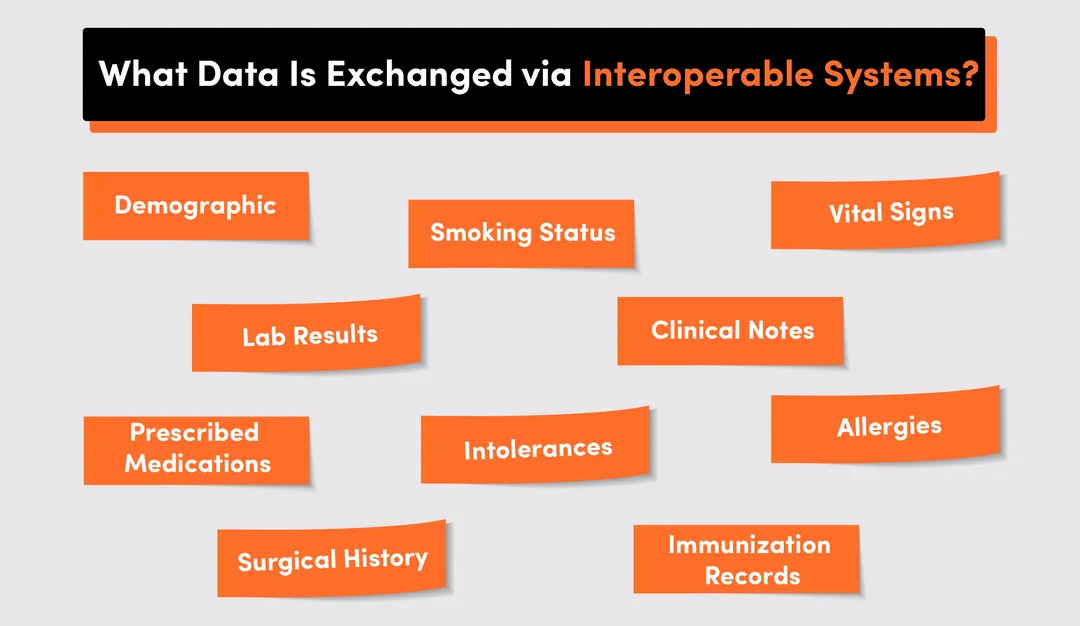
Health information technology systems that comply with the United States Core Data for Interoperability (USCDI v1) standards can facilitate the exchange of a wide range of health-related information. These standards enable the seamless sharing of data such as patient demographic details, vital signs, smoking status, prescribed medications, lab results, clinical notes, allergies, intolerances, immunization records, procedures and surgical history, and many other types of health information.
It's important to note that the list of data elements that can be exchanged is continually expanding as new standards for data sharing in healthcare continue to evolve and emerge. This interoperability helps healthcare providers, organizations, and systems communicate and collaborate effectively while providing patient-centered care.
How Can Healthcare Interoperability Enhance Your Compliance Strategy?
Healthcare interoperability plays a crucial role in enhancing a healthcare organization's risk management strategy by providing a holistic view of compliance and facilitating various aspects of data management and quality monitoring. The following are some key points elaborating on how healthcare interoperability can enhance your compliance strategy:
- Real-time billing error detection and fraud prevention
When healthcare data from disparate systems feeds into a single analytics platform, organizations can spot billing errors and suspected fraud as they occur. This real-time detection not only helps in financial management but also ensures that healthcare services are billed accurately, reducing discrepancies and potential legal issues.
- Enhanced data management
Healthcare provider directories play a crucial role in managing the data of healthcare professionals. Interoperable compliance software can integrate these directories seamlessly, enabling organizations to maintain up-to-date records of healthcare providers. This integration enhances enterprise healthcare provider data management, ensuring that accurate information is readily available for credentialing, training, and policy reviews.
- Quality monitoring and safety
Compliance, quality, and safety software are essential components of any healthcare organization. Interoperability enables these software systems to work in tandem, facilitating quality monitoring and safety measures. Organizations can efficiently track and report incidents, ensuring prompt action is taken to address safety concerns. Additionally, interoperability aids in vendor background checks, credentialing, training, and policy reviews, all of which contribute to improved quality and safety standards.
Interoperability and APIs in Healthcare - Do They Correlate?
APIs in healthcare play a significant role in ensuring health IT interoperability, particularly with the data exchange regulations outlined in the 21st Century Cures Act, which promote their standardization and widespread adoption throughout the healthcare ecosystem.
According to Daniel Kivatinos, COO and co-founder of DrChrono, APIs enable the transfer of various data sources, such as genomics and lab data. He added that providers will offer more accurate care by leveraging the wealth of data accumulated from APIs integrated with apps and hardware.
Hospitals and healthcare providers require a comprehensive clinical overview of each patient, encompassing their medical history, allergies, and any complications. However, this vital information often becomes fragmented across multiple Electronic Health Records (EHR) systems. API frameworks serve as a vital link between these diverse EHR systems, facilitating the seamless exchange of data within healthcare organizations. This, in turn, results in substantial time and cost savings.
APIs also enable the efficient synchronization of patient information across healthcare providers, insurance companies, and facilities. This minimizes delays in the patient's treatment process, as it reduces the time spent on verifying eligibility for coverage.
The CMS Interoperability and Patient Access final rule mandates that payers and providers eliminate industry barriers hindering the smooth exchange of patient data throughout the entire healthcare journey. To adhere to this rule, many provider organizations are adopting APIs.
For example, Washington and Michigan have chosen a secure API solution to provide their members with access to their personal health data, thereby ensuring compliance with the CMS interoperability rule.
When used appropriately, APIs can also bolster security measures by enabling organizations to securely share record systems with mobile, web, and cloud applications. By implementing the right security controls and adhering to best practices, healthcare organizations can harness APIs to improve efficiency and promote interoperability.
Challenges Related to Interoperability in Healthcare
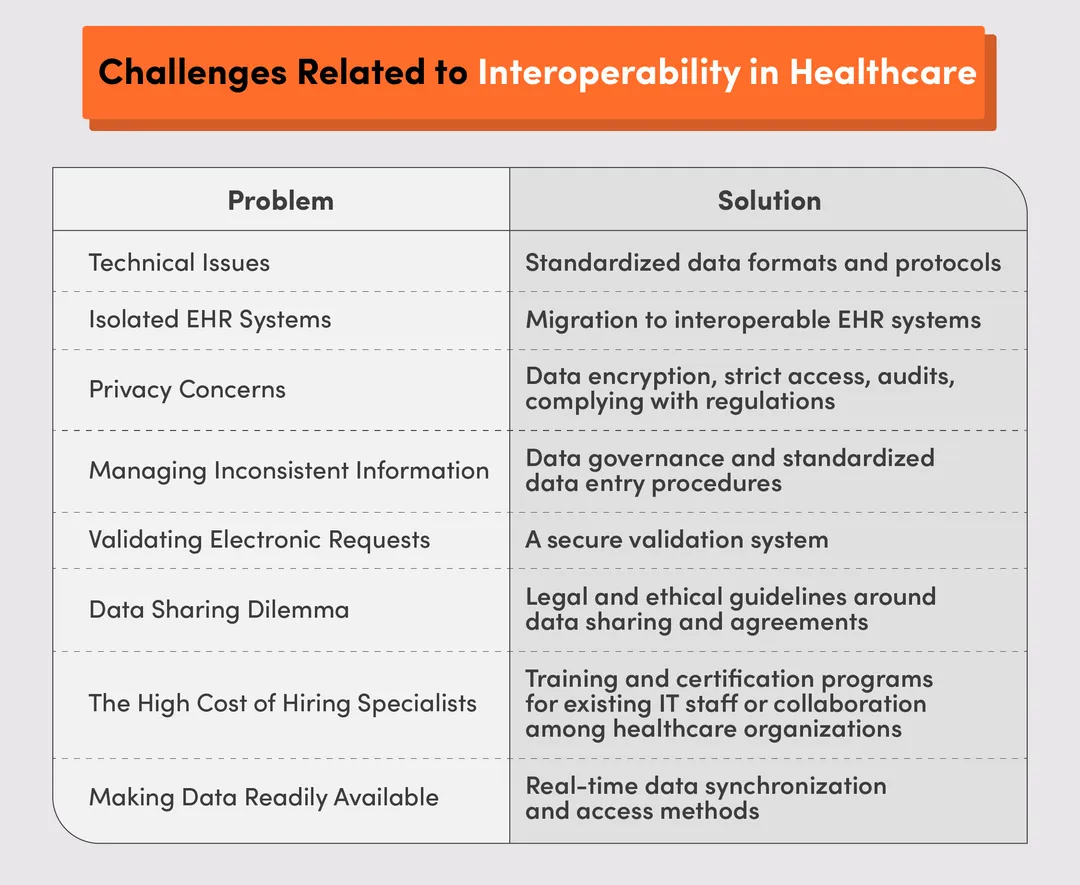
Interoperability is plagued by several challenges that need to be addressed to ensure a smooth and efficient healthcare ecosystem. In this section, we will delve into some of these challenges and provide viable solutions for each:
Technical Issues
The healthcare industry relies heavily on various software systems and devices. These technologies often differ in terms of standards, protocols, and data formats, making seamless data exchange a significant challenge.
Solution: Implement standardized data formats and protocols, such as HL7 and FHIR, and use APIs to ensure compatibility and smooth data sharing between different systems.
Isolated EHR Systems
Many healthcare providers still use isolated Electronic Health Record (EHR) systems that do not communicate effectively with each other. This results in fragmented patient data, leading to inefficient care delivery.
Solution: You will need to migrate to interoperable EHR systems that can exchange patient data seamlessly, promoting better patient care coordination.
Privacy Concerns
With the sensitive nature of healthcare data, ensuring patient privacy and data security is paramount. Concerns about data breaches and unauthorized access are significant obstacles to interoperability.
Solution: Implement robust data encryption, strict access controls, and auditing mechanisms to protect patient data while allowing authorized personnel to access information when necessary. Comply with regulations like HIPAA and GDPR.
Managing Inconsistent Information
Healthcare data can be inconsistent due to variations in how data is recorded and entered into systems. This inconsistency can hinder effective data sharing and analysis.
Solution: Establish data governance policies and standardize data entry procedures to maintain data consistency across healthcare systems.
Validating Electronic Requests
Interoperability requires the ability to validate electronic requests for patient information to ensure that only authorized parties gain access.
Solution: Develop a secure validation system that verifies the legitimacy of data requests, reducing the risk of data breaches.
Data Sharing Dilemma
Despite the benefits of data sharing, some organizations are hesitant to share patient information due to concerns about liability and data ownership.
Solution: Clarify legal and ethical guidelines around data sharing and create agreements that protect both data providers and recipients.
The High Cost of Hiring Specialists
Ensuring interoperability often requires specialized IT personnel, which can be expensive for healthcare organizations with limited budgets.
Solution: Provide training and certification programs for existing IT staff to develop interoperability expertise. Encourage collaboration among healthcare organizations to pool resources and share specialists when needed.
Making Data Readily Available
Interoperability is most effective when patient data is readily available when needed. Delays in data access can compromise patient care.
Solution: Implement real-time data synchronization and access methods to ensure that healthcare providers have immediate access to patient information.
What Are the Current Standards for Interoperability in Healthcare Technology in the United States?
Let’s explore the two nationwide interoperability standards in healthcare that play a pivotal role in ensuring smooth data exchange between medical systems.
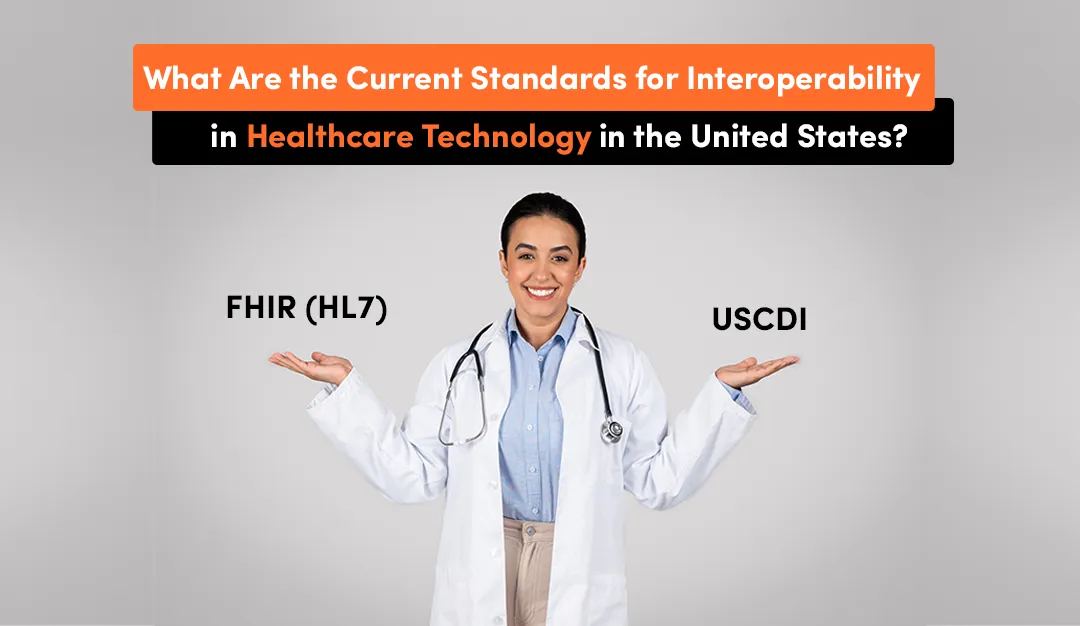
FHIR (HL7)
HL7 FHIR, pronounced "fire," stands as a beacon of innovation in the healthcare industry. It's an open-source, robust technical standard developed by HL7 International, specifically designed to revolutionize the exchange of healthcare data between different IT systems and stakeholders. FHIR's primary objective is to ensure seamless interoperability and communication among healthcare systems, irrespective of how data is stored across diverse platforms.
HL7 FHIR boasts several noteworthy features that contribute to its effectiveness in transforming healthcare data exchange:
- FHIR ensures a consistent and standardized structure for medical data, eliminating the discrepancies that often hinder data exchange.
- FHIR employs HTTP-based RESTful APIs that simplify the process of data exchange.
- FHIR enables secure data transfers between authorized users and agents. This safeguard ensures that sensitive clinical and administrative data remains confidential and protected from unauthorized access.
- FHIR supports various electronic document formats, including XML, JSON, and RDF. This flexibility accommodates the diverse preferences of healthcare systems and ensures compatibility with different data formats.
USCDI
USCDI, which stands for U.S. Core Data for Interoperability, represents a significant advancement in healthcare data standardization. It serves as a standardized set of health data classes that prioritize patient-centric information. VERSION 3 is the most recent edition (2022/23) designed to replace the previously adopted Common Clinical Data Set (CCDS).
One of the primary objectives of USCDI is to introduce and maintain standardized terminology within the healthcare domain. This common language ensures that all stakeholders in the healthcare process can effectively organize and structure healthcare data in their databases. By adhering to universally acknowledged terminology, healthcare organizations can minimize confusion and misinterpretation of data.
USCDI provides a comprehensive list of specific categories, each with its unique specifications, such as SNOMED International for controlled substances and other aspects. Within these categories, there are defined data elements and patient profile options that are mandatory for every healthcare IT system to accommodate. This includes patient demographics, allergies and intolerances, health status/assessments, clinical notes, clinical tests, diagnostic imaging, medications, vital signs, immunizations, etc.
Summary
The landscape of healthcare interoperability is filled with promise, but it also presents significant challenges that cannot be ignored. We've explored key issues such as technical challenges, isolated EHR systems, privacy concerns, information inconsistency, data sharing issues, and more.
While the challenges related to interoperability in healthcare are substantial, they are not insurmountable.
Understanding these challenges is the first step towards finding effective solutions. Healthcare professionals, IT experts, and policymakers, alike must educate themselves about these challenges and actively engage in seeking innovative solutions.
As technology continues to advance and the importance of seamless data exchange in healthcare becomes increasingly evident, addressing these challenges becomes all the more critical in realizing the full potential of interoperable systems.
